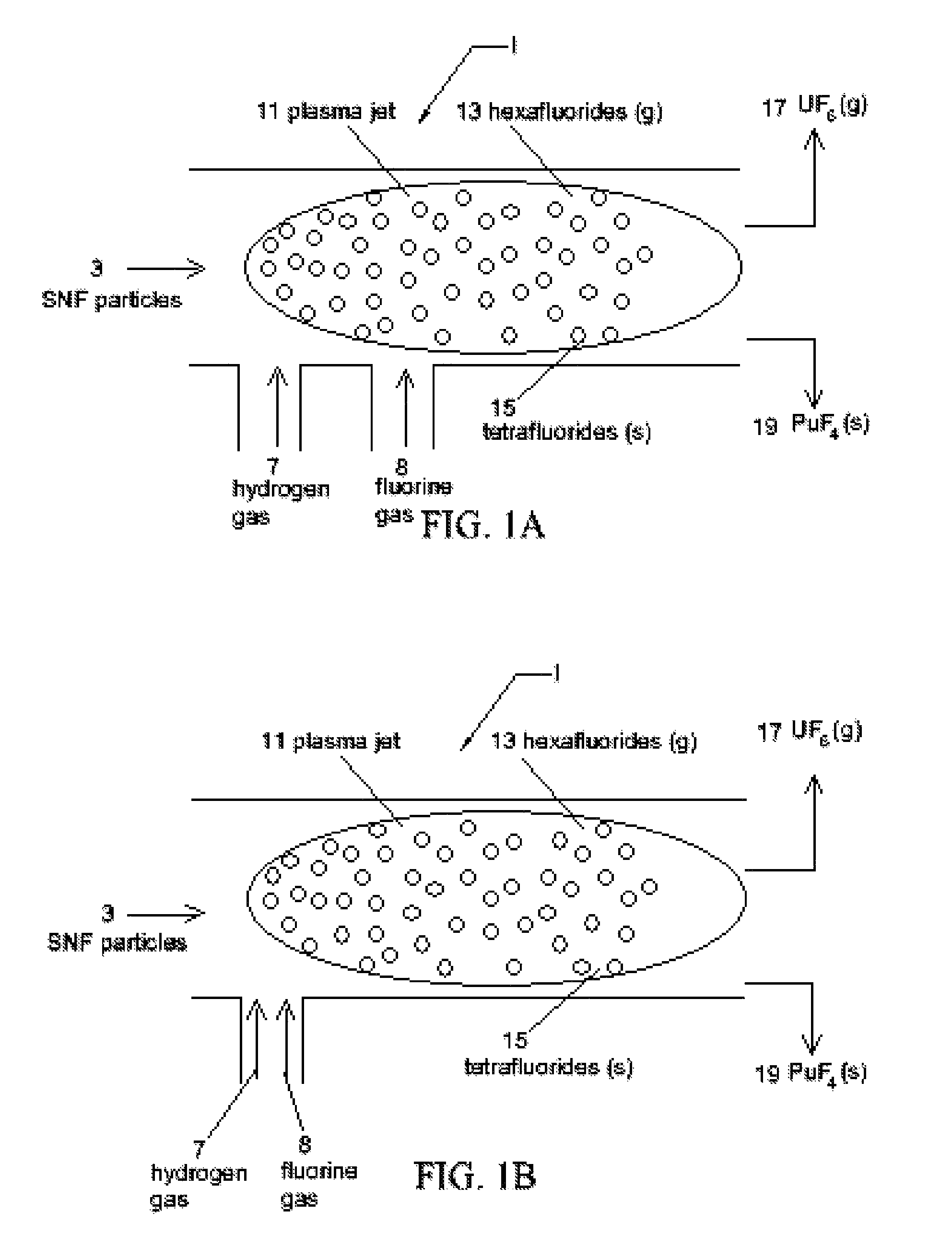Spent nuclear fuel recycling with plasma reduction and etching
a nuclear fuel and plasma technology, applied in the field of nuclear fuel recycling, can solve the problems of large amounts of liquid radioactive waste, and achieve the effects of reducing the corrosive atmosphere, and reducing the amount of was
- Summary
- Abstract
- Description
- Claims
- Application Information
AI Technical Summary
Benefits of technology
Problems solved by technology
Method used
Image
Examples
Embodiment Construction
[0026]
AcronymsFPFission ProductNTPNon thermal plasma—a plasma in which the various plasma species are not in thermal equilibrium.PUREXPlutonium-URanium EXtraction—aqueous nuclear reprocessing method for the recovery of uranium and plutonium from used nuclear fuel.RFradiofrequencySNFSpent Nuclear FuelTRUTransuranic elements
[0027]The present invention uses a two plasma chemical process. Spent nuclear fuel particles (containing oxides of uranium, oxides of fission products (FP) and oxides of transuranic (TRU) elements (including plutonium)) are subjected to a hydrogen plasma (which reduces the SNF metal oxides from their oxide state) and a fluorine plasma (which etches the SNF metals). The diameter of the SNF particles are preferably less than or equal to 100 micrometres (μm). The use of plasmas (particularly non-thermal plasmas) instead of high temperature reactors or flames mitigates the high temperature corrosive atmosphere and the production of PuF6 (as a final product). Use of pla...
PUM
| Property | Measurement | Unit |
|---|---|---|
| Temperature | aaaaa | aaaaa |
| Diameter | aaaaa | aaaaa |
| Temperature | aaaaa | aaaaa |
Abstract
Description
Claims
Application Information
 Login to View More
Login to View More - R&D
- Intellectual Property
- Life Sciences
- Materials
- Tech Scout
- Unparalleled Data Quality
- Higher Quality Content
- 60% Fewer Hallucinations
Browse by: Latest US Patents, China's latest patents, Technical Efficacy Thesaurus, Application Domain, Technology Topic, Popular Technical Reports.
© 2025 PatSnap. All rights reserved.Legal|Privacy policy|Modern Slavery Act Transparency Statement|Sitemap|About US| Contact US: help@patsnap.com



